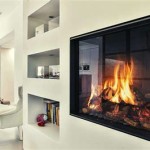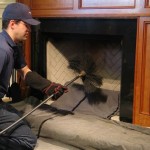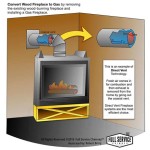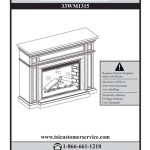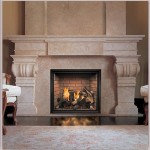Gas Portable Fireplace: A Comprehensive Guide
Gas portable fireplaces offer a convenient and adaptable solution for adding warmth and ambiance to a variety of spaces. Unlike traditional wood-burning fireplaces that require permanent installation and fuel storage, portable gas fireplaces are designed for mobility, allowing users to enjoy the comfort of a fire in different locations, whether indoors or outdoors. This article explores the features, benefits, safety considerations, and maintenance aspects of gas portable fireplaces, providing a comprehensive understanding of this increasingly popular heating appliance.
Understanding the Components and Functionality
The core function of a gas portable fireplace revolves around the controlled combustion of a gaseous fuel source, commonly propane or natural gas. The fireplace typically consists of several key components: a burner, a housing unit, a control valve, a gas supply connection, and, in many cases, decorative elements like artificial logs or glass beads. The burner, usually made of stainless steel or cast iron, is designed to distribute the gas evenly, creating a realistic flame pattern. The housing unit serves as a protective enclosure and often incorporates design features that enhance the visual appeal of the fireplace.
The control valve regulates the flow of gas to the burner, allowing the user to adjust the flame height and heat output. This control mechanism is crucial for safe and efficient operation. The gas supply connection is designed to connect the fireplace to a propane tank or a natural gas line, depending on the model. Propane models typically connect to a standard propane tank, while natural gas models require a connection to a natural gas line via a specialized hose or fitting. Decorative elements, such as ceramic logs or colored glass, enhance the aesthetic appeal of the fireplace, mimicking the look of a traditional wood-burning fire.
Gas portable fireplaces operate by igniting a mixture of gas and air within the burner assembly. The control valve regulates the gas flow, while air inlets provide the necessary oxygen for combustion. The ignition process is typically initiated by a piezoelectric igniter or an electronic ignition system. Once ignited, the gas burns, producing heat and visible flames. The heat is then radiated into the surrounding environment, providing warmth and comfort. The flame height and heat output can be adjusted using the control valve, allowing users to customize the fireplace's performance to their specific needs and preferences.
Advantages of Using a Gas Portable Fireplace
Gas portable fireplaces offer numerous advantages over traditional fireplaces and other heating solutions. One of the primary benefits is their portability. These fireplaces are designed to be easily moved from one location to another, allowing users to enjoy the warmth and ambiance of a fire in different rooms, on patios, decks, or even while camping. This portability is particularly appealing to individuals who frequently relocate or who want the flexibility to use a fireplace in various settings.
Another significant advantage is the ease of use. Gas portable fireplaces are typically much easier to operate than wood-burning fireplaces. There is no need to gather, store, or chop wood, and the ignition process is usually as simple as turning a knob and pressing a button. Many models also feature adjustable flame controls, allowing users to easily customize the heat output and flame height. This ease of use makes gas portable fireplaces an attractive option for individuals who want the convenience of a fireplace without the hassle of managing wood.
Furthermore, gas portable fireplaces are generally cleaner and more environmentally friendly than wood-burning fireplaces. They produce significantly less smoke and particulate matter, reducing air pollution and minimizing the risk of respiratory problems. Gas burns more completely than wood, resulting in fewer emissions and a smaller carbon footprint. This makes gas portable fireplaces a more sustainable heating option for environmentally conscious consumers.
Finally, gas portable fireplaces often offer better temperature control than wood-burning fireplaces. The adjustable flame controls allow users to precisely regulate the heat output, ensuring a comfortable and consistent temperature. This is particularly beneficial in smaller spaces where overheating can be a concern. With gas portable fireplaces, users can easily adjust the heat to their desired level, creating a comfortable and inviting atmosphere.
Safety Considerations and Proper Usage
While gas portable fireplaces offer numerous benefits, it is crucial to prioritize safety and follow proper usage guidelines to prevent accidents and ensure safe operation. One of the most important safety considerations is proper ventilation. Gas fireplaces consume oxygen during combustion, and inadequate ventilation can lead to a buildup of carbon monoxide, a colorless and odorless gas that can be deadly. It is essential to use gas portable fireplaces in well-ventilated areas, especially when operating them indoors.
Carbon monoxide detectors should be installed in the vicinity of the fireplace to provide early warning of any potential carbon monoxide buildup. Regular testing of the carbon monoxide detector is also crucial to ensure it is functioning properly. Never operate a gas portable fireplace in enclosed spaces, such as garages or tents, without adequate ventilation. These spaces can quickly become filled with carbon monoxide, posing a serious health risk.
Another important safety consideration is the proper connection and maintenance of the gas supply line. Ensure that the gas line is securely connected to the fireplace and the gas source, whether it is a propane tank or a natural gas line. Regularly inspect the gas line for any signs of damage, such as cracks or leaks. If you detect any damage, do not use the fireplace and have the gas line repaired or replaced by a qualified technician. Always use the correct type of gas line for the intended fuel source, and never attempt to modify or repair the gas line yourself.
Keep flammable materials away from the fireplace to prevent fires. Maintain a safe distance between the fireplace and curtains, furniture, paper, and other combustible materials. Never leave the fireplace unattended while it is in operation. Always supervise children and pets when the fireplace is in use to prevent accidental burns or other injuries. Ensure that the fireplace is placed on a stable and level surface to prevent it from tipping over. Follow the manufacturer's instructions for safe operation and maintenance, and never attempt to modify the fireplace in any way.
Regular maintenance is essential for ensuring the safe and efficient operation of a gas portable fireplace. Clean the burner assembly regularly to remove any debris or buildup that could obstruct the gas flow. Inspect the control valve and gas line for any signs of damage or wear. Have the fireplace professionally inspected and serviced at least once a year to ensure that all components are functioning properly. By following these safety precautions and maintenance guidelines, users can enjoy the benefits of a gas portable fireplace safely and responsibly.
When choosing a gas portable fireplace, it's also important to consider the type of gas it uses. Propane fireplaces are typically more portable, as they can be easily connected to a portable propane tank. Natural gas fireplaces, on the other hand, require a connection to a natural gas line, which limits their portability. However, natural gas is often a more cost-effective fuel source than propane. Consider the intended use of the fireplace and the availability of gas connections when making your decision.
Furthermore, consider the size and heat output of the fireplace. Choose a fireplace that is appropriately sized for the space you intend to heat. A fireplace that is too small may not provide adequate warmth, while a fireplace that is too large may overheat the space. Check the BTU (British Thermal Unit) rating of the fireplace to determine its heat output. As a general rule, a higher BTU rating indicates a greater heat output.
Finally, consider the design and aesthetics of the fireplace. Choose a fireplace that complements the style of your home or outdoor space. Gas portable fireplaces come in a variety of designs, from traditional to modern, so you can find one that suits your personal taste. Consider the materials used in the construction of the fireplace, as well as the color and finish. A well-designed fireplace can enhance the ambiance of your space and create a cozy and inviting atmosphere.
By considering these factors, you can choose a gas portable fireplace that meets your needs and preferences, providing you with years of warmth and enjoyment.

Portable Fireplaces Eoy All The Benefits Of A Fireplace With No Drawbacks

10 Unique Portable Fireplaces Modern Blaze

10 Portable Fireplaces For Petite Places Fireplace Indoor Design

Super Cool A Portable Fireplace For Indoors Or Outdoors Little On The Modern Side My Usu Design Outdoor Designs

Ventless Gas Fireplace Propane

10 Portable Fireplaces For Petite Places Brit Co

Portable Fireplace Outdoor Gas Propane

12 Cozy Portable Fireplace Ideas For The Modern Home Decoist

4 2kw Portable Indoor Heater With Regulator Black

Outland Living Okanagan 24 In Portable Outdoor Steel Propane Gas Fire Pit With Soft Cover Ofb 875 The Home Depot
Related Posts

